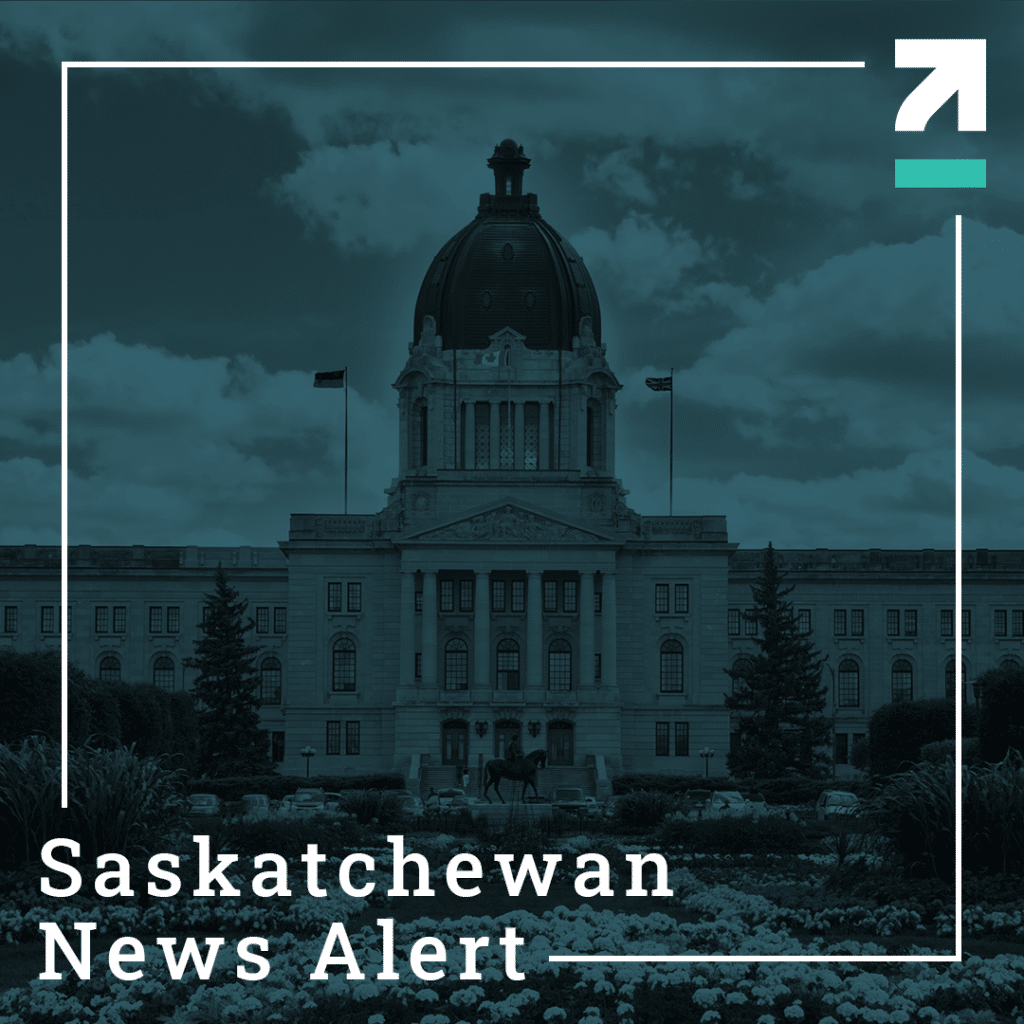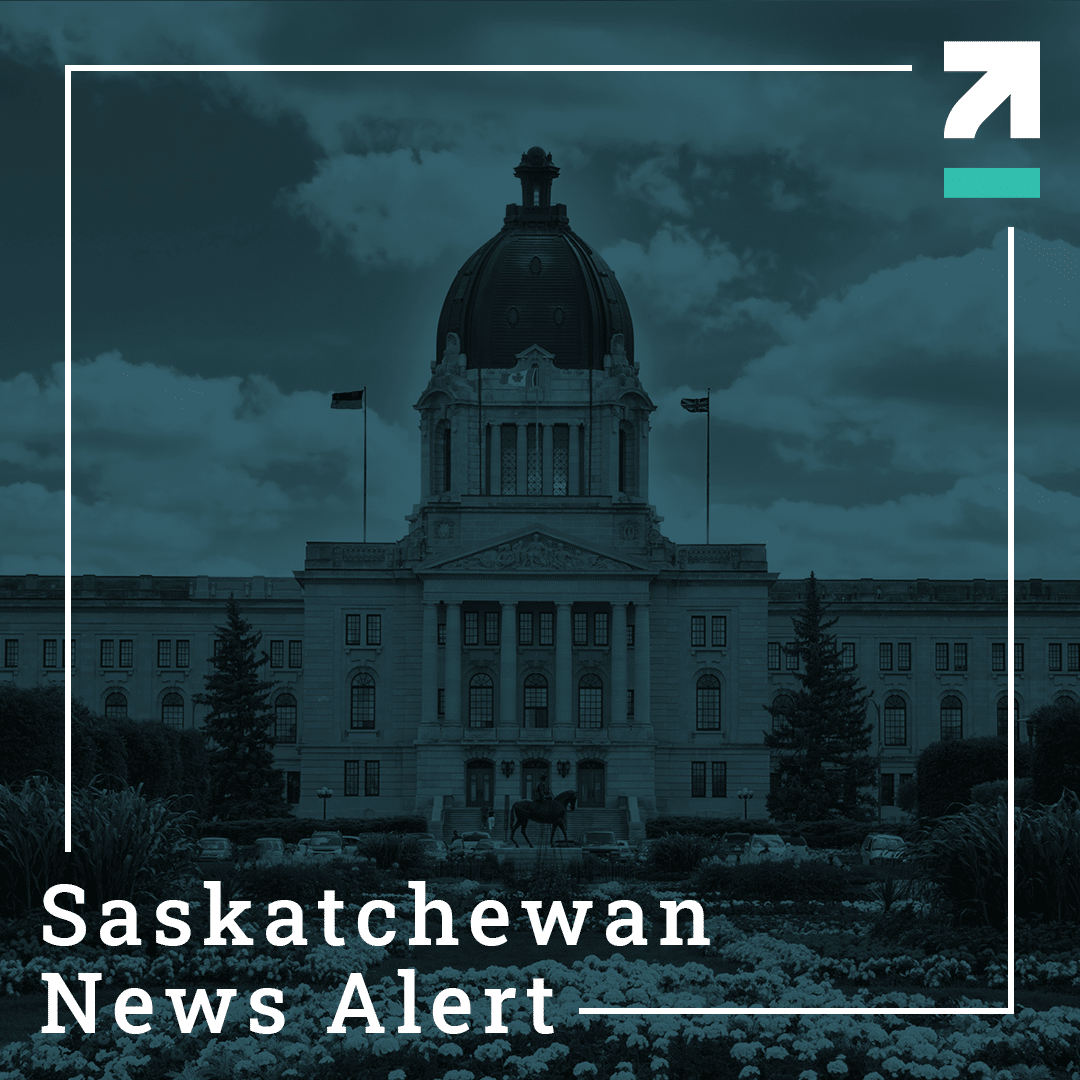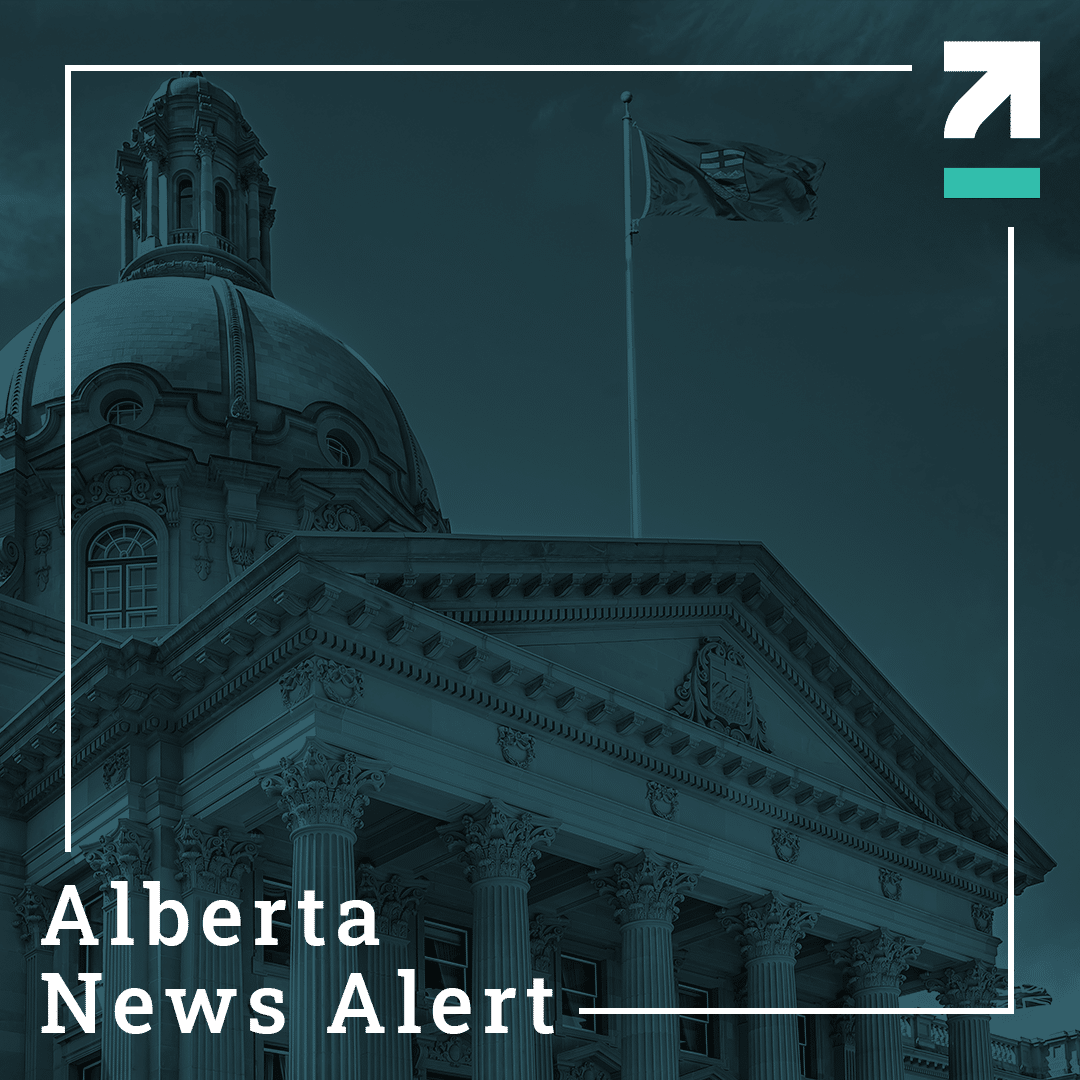Background
Budget 2022-23 is the Saskatchewan Party’s third budget since being re-elected in October 2020. As a mid-term budget, Back on Track, as it is titled, is more of a governance, as opposed to political, budget. It lays out the government’s plan to move past the pandemic (while not ignoring what the pandemic wrought) and begin rebuilding. It reorientates Saskatchewan’s finances to incorporate increased oil and potash prices, while addressing the gaps in health care that were exposed by the pandemic and investing in initiatives to grow the economy.
Last year’s budget, released in April, had projected a $2.6 billion deficit due to decreased revenues and increased spending due to the continuation of the pandemic. A summer drought dramatically increased crop insurance payouts, and, in the fall fiscal update, the deficit was revised upward to $2.71 billion. At that point, the budget was projected to not be back in balance until the 2026-27 fiscal year.
In the days leading up to this year’s budget, Premier Moe indicated it would put the province “back on track” and hinted at some policies, especially those around health care. The theme also includes a sustainable path to a balanced budget, aided by increased revenues. The document gives the government an opportunity to tell a positive story, choosing to focus on the good economic news and how that allows investment in Saskatchewan.
Politically, the Saskatchewan Party remains in a strong position, and this budget does little to change that. Currently, the Official Opposition NDP is in the midst of a leadership race, and recently lost a seat it has held since the 1970s. Further to that, they will likely be hobbled by its connection to the federal NDP, which has entered into a formal agreement to maintain the Trudeau Liberal government. Premier Moe faces an opposition that is regrouping, and this budget reflects that by maintaining government policy and the overall direction, with little bending to opposition concerns.
Budget 2021-22named three priorities: protecting citizens through healthcare spending; building communities through capital and infrastructure spending; and growing the economy.Budget 2022-23is an expansion of those priorities, with the Saskatchewan Party government focusing on building health care capacity, responding to the health care shortfalls exposed by COVID-19, and growing the economy.
The highlights of Budget 2022-23 are:
The budget deficit is projected to be $463 million. The government still plans to balance the budget by 2026-27.
Revenue is projected to be $17.2 billion up 18.5 per cent from 2020-21.
Expenses are projected to be $17.6 billion, up 3.1 per cent from 2020-21.
Budget 2022 assumes an average West Texas Intermediate price of $75.75 per barrel and US$407 per KCI tonne of potash.
Investing $30 billion in capital spending to 2030, $3.2 billion in Budget 2022-23.
Saskatchewan’s GDP is expected to grow by 3.7 percent in 2022.
GST to be applied to the Regina Exhibition.
$21.6 million to address surgical waitlist and return to pre-COVID wait times by the end of March 2023.
A $4.9 million increase for CT and MRI scans.
$12.5 million in new funding for 11 additional intensive care unit (ICU) beds, bringing the total to 90 across the province in 2022-23. It’s the first year of a three-year strategy to bring total ICU beds to 110 by 2024-25.
$3 million for 10 high acuity beds at the Regina General Hospital.
$156.6 million for health care capital, including $15.2 million for urgent care centres in Regina and Saskatoon, $13.5 million for the Prince Albert Victoria Hospital, $6 million for the Weyburn General Hospital replacement, $6.5 million to continue design and procurement activities for specialized and standard long-term care beds in Regina, $3 million for the Grenfell long-term care facility, and $2 million for the La Ronge long-term care facility.
$740.3 million through the Ministry of Advanced Education, an increase of $5.6 million, to continue a unique multi-year investment into post-secondary institutions
There is $168.5 million for Saskatchewan Polytechnic, the Saskatchewan Indian Institute of Technologies, and the Dumont Technical Institute.
$35.3 million for Saskatchewan’s Regional Colleges.
$114 million investment in the Ministry of Immigration and Career Training on training programs to support the development of the labour market. This includes $2.5 million for the Re-Skill Saskatchewan Training Subsidy, a new employer-driven, short-term training program.
This budget builds upon existing support programs, including the Graduate Retention Program, the most aggressive youth retention program in Canada, providing up to $20,000 in tax credits to eligible post- secondary graduates who remain in Saskatchewan.
$20.0 million investment for a new Education and Training Incentive this summer with monthly benefits of up to $200 for individuals to complete education and training programs on their path to employment.
$880,000 for the Digital Literacy for Job Seekers Initiative.
Increase of $8 million for the Creative Saskatchewan Production Grant Program for film and television, bringing the total funds available to $10 million.
$10.7 million in capital upgrades through the Ministry of Parks, Culture and Sport to improve visitor experiences.
$233.2 million in targeted funding for First Nations and Métis people and organizations, an increase of more than 20 per cent from 2021-22.
$475,000 to create the Saskatchewan Indigenous Investment Finance Corporation (SIIFC), in the Ministry of Trade and Export Development. The SIIFC will offer $75 million in loan guarantees for private sector lending to Indigenous communities and organizations for investments into natural resource and value-added agriculture projects.
$846 million into operating, maintaining, building, and improving the province’s roads and highways through the Ministry of Highways.
$479.5 million investment into transportation capital, providing funding for over 1,100 kilometres of improvements on provincial highways, as well as bridge rehabilitation and replacements, on track to meet the Growth Plan commitments to upgrade and build 10,000 kilometres of the provincial highway network by 2030.
$452.6 million for significant planned upgrades including Highway 3 twinning west of Prince Albert, Highway 5 corridor improvements east of Saskatoon and planning and pre-construction for twinning projects on Highways 6 and 39 near Regina and Weyburn.
$65 million for the Enhanced Intersection Safety Program.
$27 million in transfers related to municipal infrastructure for the Rural Integrated Roads for Growth program, the Urban Highway Connector Program and the Community Airport Partnership Program.
$268.6 million for municipal infrastructure including $162.6 million under the Canada Infrastructure Program, $69.1 million through the Canada Community Building Fund, $35.4 million through the New Building Canada Fund and $1.5 million in other small programs.
SaskTel is investing $377 million to improve its networks.
Initiatives by Category
Health Care
$21.6 million to address surgical waitlist and return to pre-COVID wait times by the end of March 2023.
$4.8 million for home care services.
$4.1 million to provide high-dose influenza vaccine to adults 65 and older.
$1.6 million to operate the Meadow Lake Northwest Community Lodge.
$6.5 million for an additional 117 continuing care aide positions, part of the three-year $18.4 million Government commitment to expand continuing care aide positions by 300, to work in long-term care and in existing and expanded home care services, including in rural and remote areas.
A $4.9 million increase for CT and MRI scans.
Establish a new and independent agency dedicated to recruiting and retaining health care workers.
A $1.5 million increase to support recruitment initiatives including the development of a settlement and relocation incentive program to recruit health care workers to Saskatchewan from the Philippines.
$3.5 million for physician recruitment and retention initiatives, particularly targeting family physicians working in rural areas of the province.
$12.5 million in new funding for 11 additional intensive care unit (ICU) beds, bringing the total to 90 across the province in 2022-23. It’s the first year of a three-year strategy to bring total ICU beds to 110 by 2024-25.
$3 million for 10 high acuity beds at the Regina General Hospital.
A $10.8 million increase to fund new paramedic positions for ambulance services, community para-medicine, and enhance the Medical First Responder Program.
$470 million into mental health and addictions programs and services.
$95 million to sustain the ongoing pandemic response and continue protecting Saskatchewan people in the transition to living with COVID-19, including personal protective equipment, support for 58 temporary acute care beds in Regina and Saskatoon, and compensation and operating costs for pressures expected to continue in 2022-23.
$156.6 million for health care capital, including $15.2 million for urgent care centres in Regina and Saskatoon, $13.5 million for the Prince Albert Victoria Hospital, $6 million for the Weyburn General Hospital replacement, $6.5 million to continue design and procurement activities for specialized and standard long-term care beds in Regina, $3 million for the Grenfell long-term care facility, and $2 million for the La Ronge long-term care facility.
Education
$3.8 billion total funding for education, up $47.2 million or 1.3 per cent from 2021-22.
Saskatchewan’s 27 school divisions will receive $1.99 billion in operating funding for the 2022-23 school year, a $29.4 million increase – fully funding the two per cent salary increase as part of the Teachers’ Collective Bargaining Agreement.
$6.0 million increase in learning supports for students.
A new $7-million fund will allow school divisions to hire up to 200 additional full-time educational assistants for the 2022-23 school year.
Historical high schools and qualified independent schools will receive an increase of $2.6 million to support enrolment and the creation of a new Qualified Independent School category.
$309.6 million for child care and early learning, including funding provided through the Federal-Provincial Early Years agreements.
$4.3 million of that funding to create 6,100 new child care spaces.
$740.3 million through the Ministry of Advanced Education, an increase of $5.6 million, to continue a unique multi-year investment into post-secondary institutions and includes funding to train more nurses.
$4.9 million increase to add 150 seats for nursing education.
$684.1 million in operating and capital grants to post-secondary institutions including $445.9 million for the University of Saskatchewan, University of Regina, and the federated and affiliated colleges.
There is $168.5 million for Saskatchewan Polytechnic, the Saskatchewan Indian Institute of Technologies, and the Dumont Technical Institute.
$35.3 million for Saskatchewan’s Regional Colleges.
$31 million for capital projects and preventative maintenance and renewal throughout the post-secondary sector.
$114 million investment in the Ministry of Immigration and Career Training on training programs to support the development of the labour market. This includes $2.5 million for the Re-Skill Saskatchewan Training Subsidy, a new employer-driven, short-term training program.
This Budget builds upon existing support programs, including the Graduate Retention Program, the most aggressive youth retention program in Canada, providing up to $20,000 in tax credits to eligible post- secondary graduates who remain in Saskatchewan.
Social Services and Assistance
The 2022-23 Budget for social services and assistance is $1.6 billion, up $67.3 million, or 4.3 per cent from 2021-22.
$20 million investment for a new Education and Training Incentive this summer with monthly benefits of up to $200 for individuals to complete education and training programs on their path to employment.
$3 million to fulfill the second year of government’s three-year commitment to increase benefits to seniors through the Seniors Income Plan (SIP).
$11.5 million for the Saskatchewan Housing Benefit, under the National Housing Strategy, to help people with low incomes better afford housing.
A $2 million increase in prevention programs to keep children safely at home.
$5.4 million to increase available out of home care resources and add new program delivery supports, and funding to increase staff in priority areas, including $375,000 for mobile child protection workers in Northern communities and $140,000 to strengthen group home oversight.
$400 million in funding to community-based organizations (CBOs). This includes increased funding of $8.7 million to community-based providers, including $4.9 million for service providers who work with people with intellectual disabilities, $3.2 million for service providers supporting at-risk children, youth, and families, and $556,000 to approved private service homes that care for people with intellectual disabilities and mental health issues.
Protection of Persons and Property
The 2022-23 Budget includes $936.2 million for the protection of persons and property, an increase of $91.1 million or 10.8 per cent from last year.
$947.0 million for the justice system and related capital, an increase of $32.7 million or
3.6 per cent compared to last year.$2.7 million for online access to justice to support self-service and remote options.
$50.7 million to create a Provincial Protective Services branch to unite provincial peace officers into a single organizational structure.
$1.6 million to establish a Warrant Enforcement and Suppression Team to target high-risk offenders with outstanding warrants.
$6.4 million to establish the Saskatchewan Trafficking Response Team.
$3.2 million to expand Crime Reduction Teams.
$220,000 to expand the Internet Child Exploitation Unit.
$4.5 million for the Gang Violence Reduction Strategy.
$1.7 million in this Budget to enhance the investigative ability of those working with the Criminal Property Forfeiture Fund.
$244,000 to expand the services of the Aboriginal Courtworker Program to additional communities, to assist families, adults and youth in criminal and family courts.
The Saskatchewan Public Safety Agency has a budget of $94.9 million, up $2.8 million or 2.9 per cent, from last year to protect the people of the province and create safe, strong communities. Budget 2022-23 includes investment to modernize the province’s aerial wildfire suppression fleet, including a Turbo Commander Bird Dog and a CL215T Air Tanker that will be delivered in 2022.
Economy
$880,000 for the Digital Literacy for Job Seekers Initiative.
Increase of $8 million for the Creative Saskatchewan Production Grant Program for film and television, bringing the total funds available to $10 million.
Increase of $3.1 million to fully fund the International Trade and Investment Strategy, managed by the Ministry of Trade and Export Development.
$338.5 million to fund business risk management programs including Crop Insurance, AgriStability, AgriInvest, and Western Livestock Price Insurance.
$2.5 million for irrigation development projects in various locations throughout Saskatchewan.
$112 million in Energy and Resources for the final year of the three-year Accelerated Site Closure Program (ASCP) to support Saskatchewan-based oil and gas service companies and more than 2,000 jobs in the sector. The program is federally funded and cleans up abandoned oil and gas well sites.
$6.7 million more in revenue from video lottery terminals (VLTs) to bar and restaurant owners. Effective April 4, 2022, the VLT site commission rates will increase from 15 per cent to 18 per cent.
$10.7 million in capital upgrades through the Ministry of Parks, Culture and Sport to improve visitor experiences.
The Community Rink affordability grant, providing $2,500 per ice surface, is in place for 2022-23. The $1.7 million program addresses eligible operating costs and minor capital improvements for more than 600 ice surfaces in more than 350 communities.
Municipal Revenue Sharing of $262.6 million, an increase of over 106 per cent since 2007-08, will help keep the province’s urban, rural and northern communities strong in 2022-23.
$448.5 million of direct provincial support to municipalities. Support includes revenue sharing, the province’s portion of infrastructure funding and a number of grants and initiatives from multiple Government ministries and the Crowns through grants-in-lieu and municipal surcharge collections.
$233.2 million in targeted funding for First Nations and Métis people, and organizations, an increase of more than 20 per cent from 2021-22.
$475,000 to create the Saskatchewan Indigenous Investment Finance Corporation (SIIFC), in the Ministry of Trade and Export Development. The SIIFC will offer $75 million in loan guarantees for private sector lending to Indigenous communities and organizations for investments into natural resource and value-added agriculture projects.
$150 per child enrolled in sport, recreation, and cultural activities. The benefit provides an additional $50 per child to families of children with a disability.
The continuation of the Saskatchewan Home Renovation Tax credit provides a 10.5 per cent tax credit on up to $20,000 of eligible home renovations done between October 1, 2020 and December 31, 2022. It started with the 2021 tax year and continues with the 2022 tax year. The tax credit is forecast to cover $44.7 million of costs in 2022-23, making life more affordable for Saskatchewan people while helping increase activity for those working in construction and skilled trades.
Capital and Investment
$846 million into operating, maintaining, building, and improving the province’s roads and highways through the Ministry of Highways.
$479.5 million investment into transportation capital, providing funding for over 1,100 kilometres of improvements on provincial highways, as well as bridge rehabilitation and replacements, on track to meet the Growth Plan commitments to upgrade and build 10,000 kilometres of the provincial highway network by 2030.
$452.6 million for significant planned upgrades including Highway 3 twinning west of Prince Albert, Highway 5 corridor improvements east of Saskatoon and planning and pre-construction for twinning projects on Highways 6 and 39 near Regina and Weyburn.
$65 million for the Enhanced Intersection Safety Program.
$27 million in transfers related to municipal infrastructure for the Rural Integrated Roads for Growth program, the Urban Highway Connector Program, and the Community Airport Partnership Program.
$168.6 million for school infrastructure to support ongoing capital projects which will build and renovate schools and fund relocatable classrooms.
$95.2 million to support the ongoing planning and construction of 15 new schools and the renovation of five existing schools, as well as $55.9 million for preventative and emergency maintenance. An additional $12.0 million has been provided for relocatable classrooms.
$4.5 million for a new minor capital renewal program that will allow school divisions to address structural repairs, renovations, and additions to prolong the life of schools across the province.
$291.8 million in government services infrastructure, including $74.5 million for dams, water supply channels and irrigation projects aligned with Growth Plan goals to increase irrigation and water management in Saskatchewan.
$56.4 million for courts and correction capital, with continued construction of the Saskatoon Remand Centre representing roughly half of that amount.
$268.6 million for municipal infrastructure including $162.6 million under the Canada Infrastructure Program, $69.1 million through the Canada Community Building Fund, $35.4 million through the New Building Canada Fund and $1.5 million in other small programs.
Advanced Education will invest $31.0 million in 2022-23 into ongoing capital maintenance and planning and design work for upgrades to the University of Saskatchewan Dental College and the Saskatoon campus renewal project at Saskatchewan Polytechnic.
Crown corporations will invest $1.8 billion into major capital, including $1.1 billion by SaskPower to improve the province’s electricity system to meet demand and maintain reliability.
SaskEnergy is investing $272.8 million in the province’s natural gas distribution system, including expansion of the transmission system to meet increased demand in a growing province.
SaskTel is investing $377 million to improve its networks.






